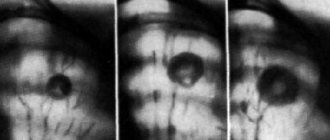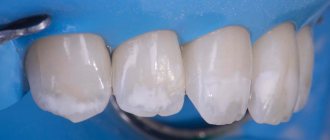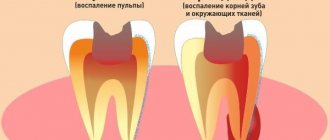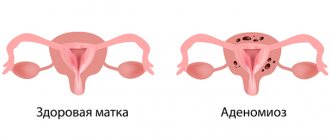Description of the disease, stage
Hodgkin's lymphoma is a malignant enlargement of lymphoid tissue, which is characterized by the formation of specific cells. Another name for the disease is lymphogranulomatosis. Accompanied by enlarged lymph nodes located under the lower jaw, above the collarbones, general weakness, enlarged spleen, low-grade fever.
The focus of the pathology is in the lymph nodes and does not affect the bone marrow for a long time. Hodgkin's lymphoma can be distinguished from other forms only by tests that show the presence of Berezovsky-Sternberg-Reed cells.
The risk group includes young men aged 20-30 years, as well as older men over 60 years of age. The largest number of cases are registered between the ages of 16 and 34 years.
There are five stages of the disease:
- at the zero stage, a person does not feel any changes in health;
- the first is characterized by slight weakness due to which the possibilities of physical labor are limited;
- on the second, fatigue reaches its peak - the patient lies for half the day, movement is difficult;
- at the third stage, a person has been lying down for more than half a day, even performing usual actions is very difficult, constant care is required;
- the fourth stage is the most severe, patients mostly lie down, get tired quickly, even talking can quickly tire.
Types of Hodgkin's disease
Tumor cells in Hodgkin's disease are called Reed-Sternberg cells, named after the authors who first described them.
Based on microscopic data, several types of Hodgkin's disease have been identified. This division is of great importance, because Different types of disease differ in clinical course, distribution and treatment.
- Nodular sclerosis (mediastinal lymph nodes are most often affected)
- Mixed cell (most common subtype in children)
- Enriched with lymphocytes (variant of lymphoid predominance)
- With suppression of lymphocytes (a variant of lymphoid depletion) - the rarest subtype in children.
How does Hodgkin lymphoma manifest?
Initial signs of pathology include:
- feeling of weakness;
- increased sweating, which worsens at night;
- elevated temperature – over 38°C.
The symptoms are typical of colds, so people don't take them seriously. As a result, the condition worsens over time - the person loses weight, notices an enlargement of the lymph nodes, their hardening, but there is no discomfort when palpating.
Symptoms of Hodgkin's lymphoma also include:
- pain in the nodes when drinking alcoholic beverages;
- a change in the reaction to insect bites in the direction of intensification;
- complaints of itching sensations for no obvious reason.
At more serious stages, difficulty breathing and swallowing appears, as well as swelling of large vessels in the neck and head. In the absence of adequate treatment for such symptoms, a person will develop complications in the form of intestinal obstruction, enlarged spleen, and problems with kidney function. Possible development of renal and heart failure. Due to a weakened body and decreased immunity, infection occurs, the pathogens of which are safe for the average person.
Risk factors for Hodgkin's disease
Currently, several factors are known that can contribute to the occurrence of Hodgkin's disease.
Infectious mononucleosis (caused by the Epstein-Barr virus) increases the risk of developing Hodgkin's disease to some extent. However, 50% of patients with Hodgkin's disease have not previously had this infection.
Immune suppression is also associated with an increased risk of developing Hodgkin's disease. This is possible for conditions such as acquired immunodeficiency syndrome (AIDS), organ transplantation, and congenital immunodeficiency syndromes such as ataxia-telangiectasia.
There are known cases of Hodgkin's disease in one family. Moreover, if one of the twins develops Hodgkin's disease, the other is more likely to develop the same disease.
Unfortunately, there are currently no reliable ways to prevent the development of Hodgkin's disease in both children and adults.
Why does lymphogranulomatosis occur?
The exact causes of the disease have not been established. There are several triggers for Hodgkin's disease:
- genetic predisposition, when the disease is hereditary;
- previously suffered severe infectious diseases;
- spontaneous change in lymphocytes, provoked by exposure to viruses or taking medications that suppress the immune system.
Factors that provoke the disease include:
- the effect of radiation;
- working with harmful substances - pesticides, herbicides, solvents, benzenes;
- living in regions with poor ecology.
Since the exact causes of this type of lymphoma are unknown, there is no special prevention.
Incidence of Hodgkin's disease
Hodgkin's disease occurs in both children and adults, but most often in two age periods: early adulthood (15-40 years, but usually 25-30 years) and adulthood (after 55 years).
Hodgkin's disease does not occur before the age of 1 year. Up to 5 years of age, Hodgkin's disease is detected extremely rarely. In 10-15% of cases, the disease occurs in persons under 16 years of age.
The incidence of Hodgkin's disease in childhood is 0.7-0.8 cases per 100,000 children, which is significantly lower than the incidence of the disease in adults. The standardized incidence rate in Russia is 1.9 per 100,000 children. Boys get sick more often than girls, and in the age group under 10 years the predominance of boys is especially significant (3:1).
Diagnostic methods
It is important to identify the disease on time, since the patient’s chance of recovery depends on early diagnosis. Typically the examination includes:
- taking tests - OAC, OAM;
- blood test for biochemistry, attention is paid to liver tests and proteins of the acute phase of inflammation;
- chest x-ray;
- computed tomography;
- MRI;
- ultrasonography;
- positron emission tomography;
- puncture and biopsy of lymph node cells.
Various organs and systems are examined, and in some cases the entire body. Thanks to the tests, the doctor finds out the presence of concomitant infections - human immunodeficiency virus or hepatitis. To visually assess the degree of proliferation of lymph nodes, endoscopic examinations are used: FGDS, bronchoscopy, colonoscopy, laparoscopy.
Making a diagnosis takes a long time; in some cases, a medical consultation is appointed to determine treatment tactics.
Symptoms
The first symptoms that a person notices are enlarged lymph nodes. The onset of the disease is characterized by the appearance of enlarged dense formations under the skin. They are painless to the touch and may occasionally decrease in size, but subsequently increase again. Significant enlargement and soreness in the area of the lymph nodes is observed after drinking alcohol.
In some cases, enlargement of several groups of regional lymph nodes is possible:
- Cervical and supraclavicular – 60-80% of cases;
- Mediastinal lymph nodes – 50%.
Along with local symptoms, the patient is seriously concerned about general manifestations (group B symptoms):
- Excessive sweating at night (see causes of excessive sweating in women and men);
- Uncontrolled weight loss (more than 10% of body weight within 6 months);
- Fever that persists for more than one week.
Clinic “B” characterizes a more severe course of the disease and allows one to determine the need for intensive care.
Other symptoms characteristic of lymphogranulomatosis include:
- Skin itching;
- Ascites;
- Weakness, loss of strength, loss of appetite;
- Bone pain;
- Cough, chest pain, difficulty breathing;
- Abdominal pain, indigestion.
In some cases, the only symptom of lymphogranulomatosis for a long time is only a constant feeling of fatigue.
Breathing problems occur when the intrathoracic lymph nodes become enlarged. As the nodes grow, they gradually compress the trachea and cause constant coughing and other breathing problems. These symptoms are worse when lying down. In some cases, patients note pain behind the sternum.
Therapy for Hodgkin's lymphoma
The treatment protocol is selected individually and depends on the stage of the process. The disease in its early stages is treated with radiotherapy. In some cases, one month is enough for remission to occur.
In later stages, treatment is supplemented with chemotherapy. The duration of the course and the type of drug depend on the patient's condition. It is possible to prescribe hormonal drugs.
If the disease has taken a severe form, then an operation is performed - the tumor, spleen and other organs in which irreversible changes have occurred are removed. For surgery, there must be reasons listed in the clinical guidelines for the treatment of Hodgkin lymphoma. Used when drug and radiotherapy are ineffective.
Patients need to adhere to proper nutrition. The diet should contain sufficient amounts of vitamins; heavy foods should not be consumed. The menu should be varied, meals should be small and frequent.
If proper treatment is started at an early stage, the survival rate reaches 90%. The later treatment is started, the worse the survival prognosis becomes - up to 45% at the fourth stage.
Lymphogranulomatosis: treatment
The development of treatment tactics for lymphogranulomatosis by CELT hematologists is based on diagnostic results and individual patient indications. The stage of the disease must be taken into account, and an integrated approach is practiced. The methods used by our specialists allow us to completely cure the disease.
| Treatment method | When is it shown? |
| Radiation therapy | Indicated in the first (local) stage. Before it, the affected node and spleen are often removed. Affected and healthy lymph nodes are irradiated. Impact on the latter is necessary as a preventive measure. |
| Chemotherapy | Indicated at the last stage to destroy tumor cells or maintain a period of remission. |
| Their combination | In the second and third stages, introductory “chemotherapy” is first prescribed, aimed at irradiating the affected nodes, then all the rest are irradiated as much as possible. The patient needs to undergo maintenance procedures for two to three years. |
Treatment results may include complete or partial remission. The first is the complete disappearance of lymphogranulomatosis and its absence within thirty days, the second is the elimination of subjective symptoms, reducing the size of the nodes by half within thirty days.
The Department of Hematology at CELT accepts candidates, doctors and professors of medical sciences. Their practical and scientific work experience is more than twenty-five years. You can make an appointment with them online or by contacting our information line operators. If necessary, you can make an appointment with specialists at any of our departments and undergo the necessary procedures. No less experienced and qualified specialists work in the gynecological department of our clinic, where you can undergo the procedure of uterine artery embolization.
At CELT you can consult a hematologist.
- Initial consultation – 3,500
- Repeated consultation – 2,300
Make an appointment
By making an appointment with a hematologist, you can get a comprehensive consultation. The doctor is competent to treat various blood diseases, most of which can be identified in the early stages and prescribe timely treatment to cope with the disease quickly and easily.
Prevention
Unfortunately, to date, effective prevention of this disease has not been developed. More attention is paid to the prevention of relapses; this requires strict adherence to the prescribed treatment program for lymphogranulomatosis and the implementation of the necessary regimen and rhythm of everyday life.
Among the most common reasons for the recurrence of the disease are insolation and pregnancy. After suffering from this disease, the possibility of pregnancy is possible two years after remission.
Forecast
The stage of the disease is of greatest importance in the prognosis for lymphogranulomatosis. Patients with stage 4 disease have a 75% five-year survival rate, while patients with stages 1-2 have a 95% survival rate. The prognosis for signs of intoxication is poor. Early signs of an unfavorable course of the disease are “biological” indicators of activity.
Biological indicators of activity include:
- alpha-2-globulin more than 10 g/l,
- haptoglobin more than 1.5 mg%,
- an increase in ESR in the general blood test of more than 30 mm/h,
- increase in fibrinogen concentration more than 5 g/l,
- cerruloplasmin more than 0.4 extinction units.
If at least 2 of these 5 indicators exceed the specified levels, then the biological activity of the process is determined.
How to treat lymphogranulomatosis?
The main method of treating patients with lymphogranulomatosis is combined chemoradiotherapy, which varies in intensity depending on the volume of the tumor mass, that is, the total number of tumor cells in all affected organs.
In addition, the following factors influence the prognosis:
- massive lesion of the mediastinum;
- diffuse infiltration and enlargement of the spleen or the presence of more than 5 foci in it;
- tissue damage outside the lymph nodes;
- damage to lymph nodes in three or more areas;
- an increase in ESR more than 50 mm/h in stage A and more than 30 mm/h in stage B.
To treat patients with an initially favorable prognosis, 2 to 4 courses of chemotherapy are used in combination with irradiation of only the affected lymph nodes. In the group with an intermediate prognosis, 4-6 cycles of polychemotherapy and irradiation of the affected areas of the lymph nodes are used. In patients with an unfavorable prognosis of the disease, 8 courses of polychemotherapy and irradiation of areas with a large array of affected lymph nodes are carried out.










